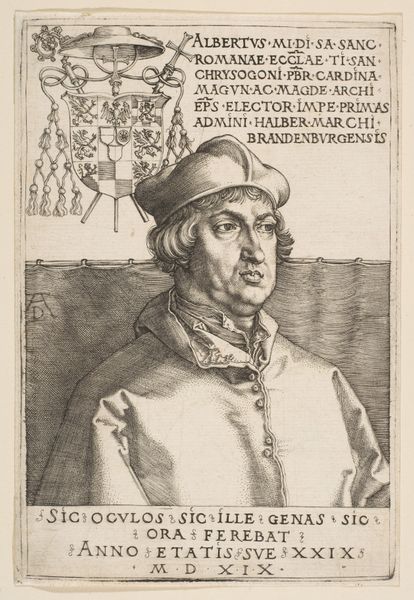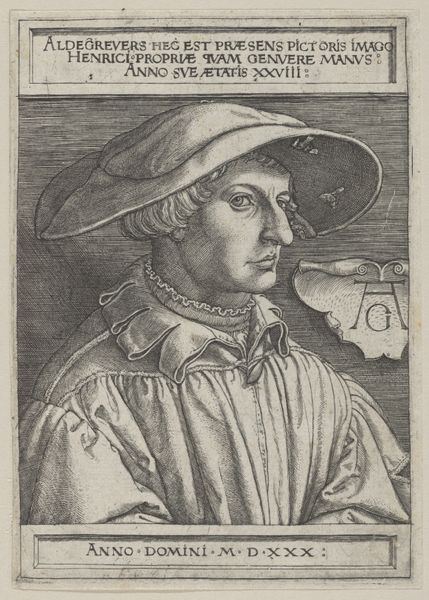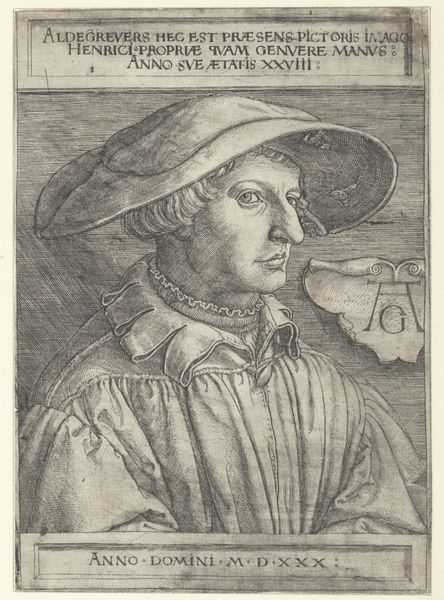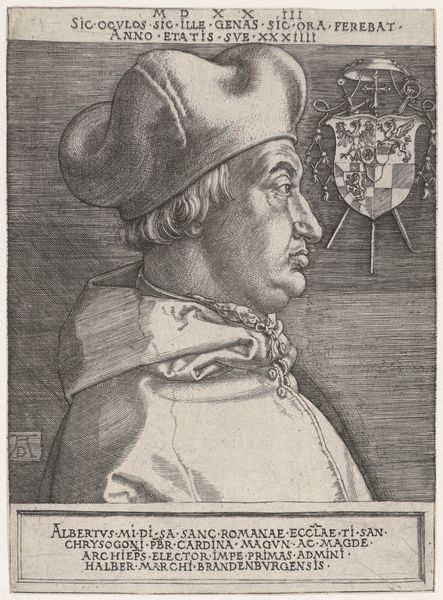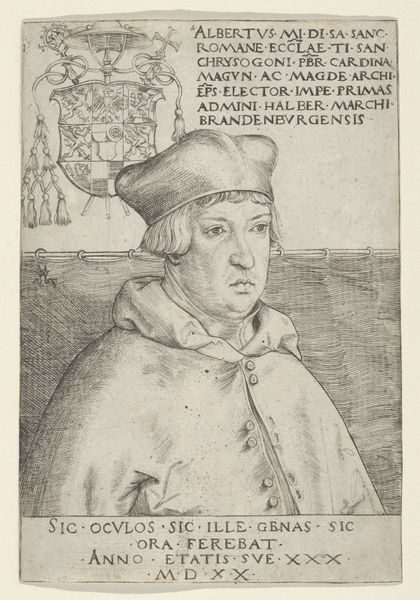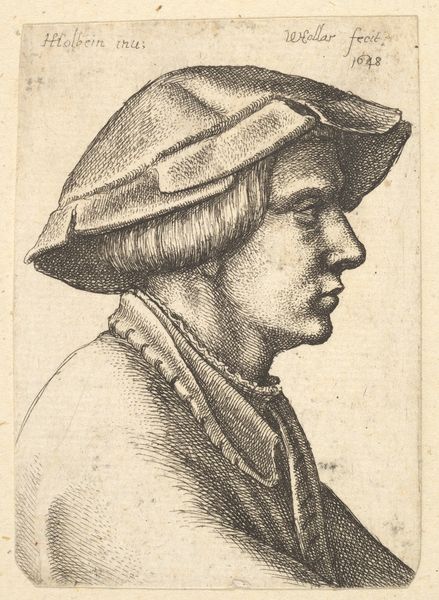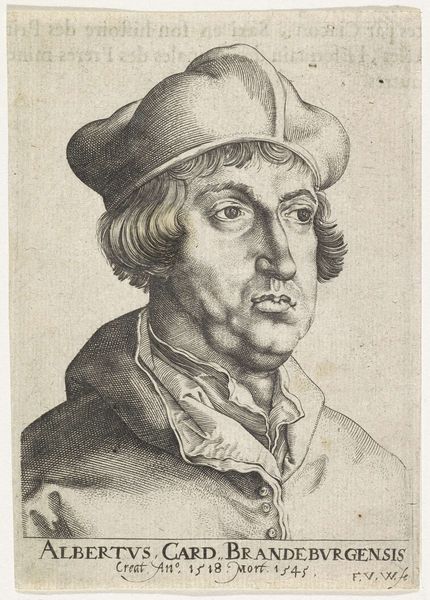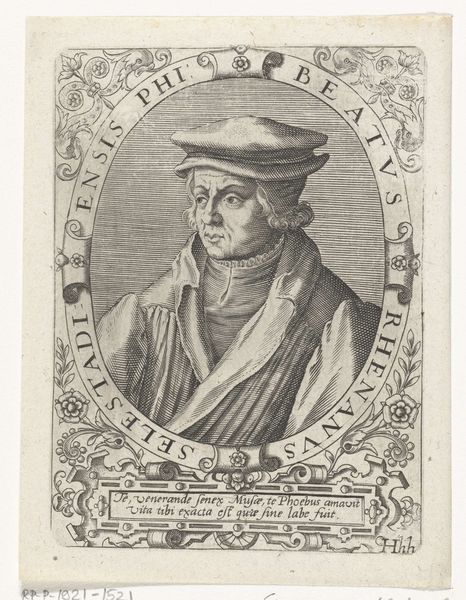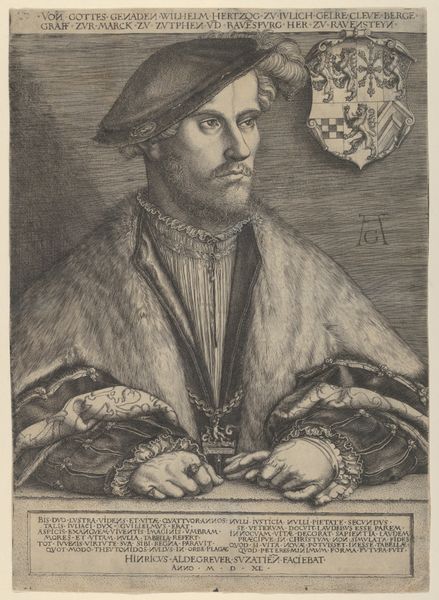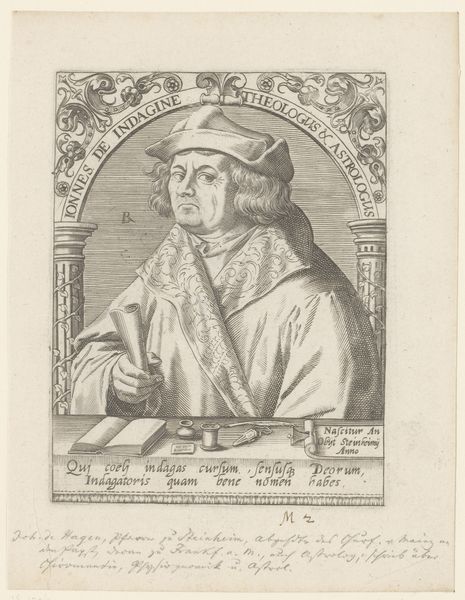
drawing, print, engraving
#
portrait
#
drawing
# print
#
11_renaissance
#
history-painting
#
northern-renaissance
#
engraving
Dimensions: Sheet: 5 13/16 × 3 7/8 in. (14.7 × 9.8 cm)
Copyright: Public Domain
Curator: What a powerful image! We’re looking at Albrecht Dürer’s 1519 engraving, "Cardinal Albrecht of Brandenburg," here at the Metropolitan Museum of Art. The crisp lines Dürer achieved are remarkable. Editor: My immediate sense is formality, but also a subtle melancholy. His gaze is direct, yet seems to hold a certain world-weariness. Is that typical for the period or for Dürer? Curator: It’s typical of both, to a degree. Dürer had a keen eye for detail, imbuing his subjects with personality. Albrecht, as a powerful religious figure in a tumultuous era, certainly carried weight. Notice the heraldic shield prominently displayed above him. It visually underscores his status and lineage, asserting his authority. Editor: Yes, and that Latin inscription surrounding the image frames it almost like a historical document rather than a piece of art. How much did the Cardinal’s position influence Dürer’s approach? Did Albrecht commission it himself? Curator: Indeed. Albrecht was one of Dürer's major patrons. The print was likely intended as propaganda. By having Dürer, already a celebrated artist, create his portrait, he was legitimizing himself to others. Editor: Interesting. So the symbolic language of power, so evident in his dress and coat of arms, serves to reinforce a carefully constructed image of authority? And the meticulous details and sharp line work, that almost hyper-realism... Curator: Contribute to that sense of unwavering power, absolutely. There’s a very clear psychological play at work here. The clothing denotes purity, which contrasts his status. Editor: Considering the social climate of the time—the Reformation was just beginning—I can see how this would serve as a very pointed declaration, a bolstering of Catholic power amid rising dissent. Curator: Precisely. Dürer's choice to use printmaking also made it far more accessible than a painting, it meant he could distribute many copies widely. This further helped assert and secure Albrecht’s power to the masses at large. Editor: Thank you. This was an incisive glimpse not only into Dürer’s talent, but also into the complexities of power, religion, and representation. I feel like I have an enhanced awareness of how images are always caught in socio-political webs. Curator: And, for me, it reinforces how artists can create objects laden with complex symbolic weight that ripples through generations of cultural memory.
Comments
No comments
Be the first to comment and join the conversation on the ultimate creative platform.
